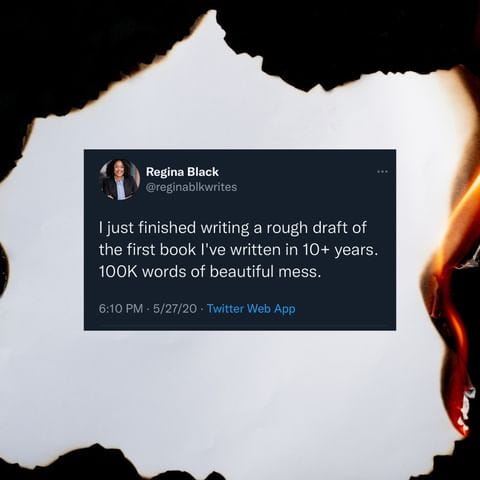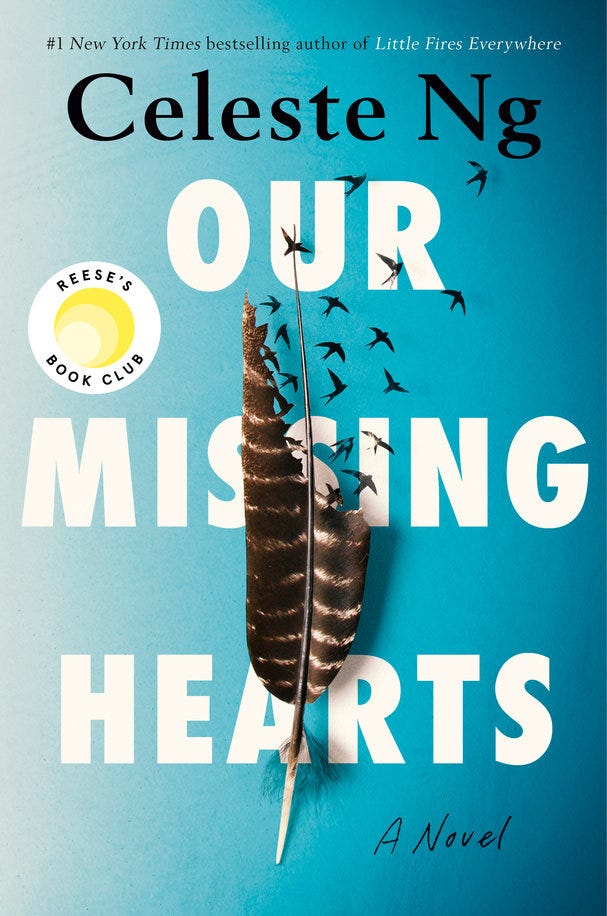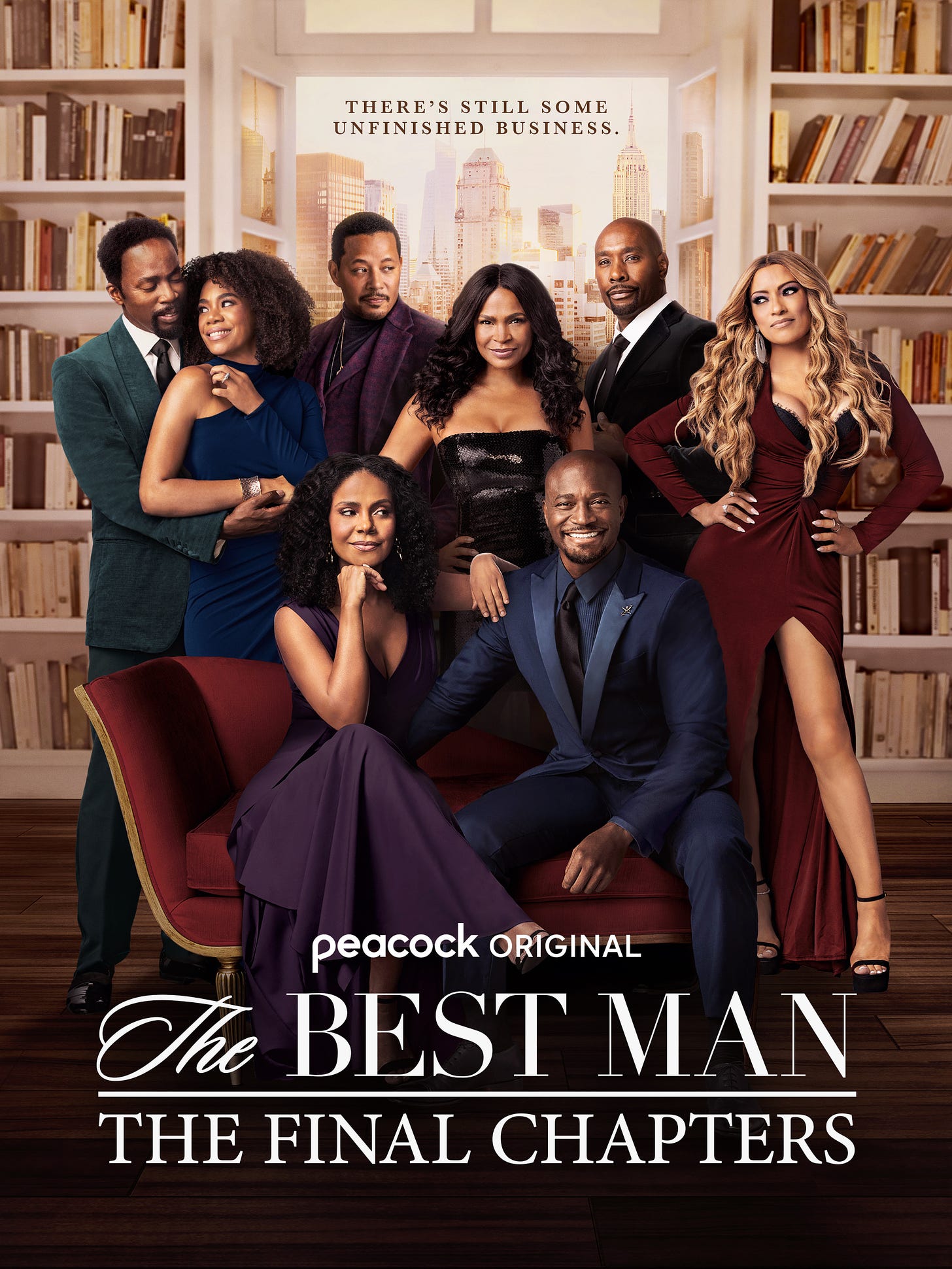Chemistry is Hard. Let's Cheat.
Writing Couples with Chemistry, plus a few things that made me cry.
Happy MLK Day! I’ll be celebrating today with my daughter by reading about Martin’s life, writing about our dreams, and having a small birthday celebration in his honor.
Speaking of dreams, I got emotional about my debut a few weeks ago. I had no idea when I finished the rough draft of THE ART OF SCANDAL in 2020 that it would be my debut. You can read more about it in the Instagram post below.
August 1st still seems far away, but I know it will be here before I know it. It’s hard to articulate the way it feels to work on something for years and then watch it slowly make its way out into the world. It’s the kind of nervous excitement that tend to consume my thoughts without a distraction. My solution? Work on something new! Developing a new book is one of my favorite parts of writing. When developing a romance, a huge part of that process is creating two characters with chemistry.
Writing Chemistry Between Two Characters
I love analyzing writing concepts that are mentioned often but are rarely defined. The presence or lack of chemistry in romance is a common topic of discussion among writers and readers, but it’s hard to find a single, succinct definition of the concept. I think chemistry is nebulous because it’s so subjective. What’s compelling, fun, or hot to one reader may not be the same for the next. However, we can all agree on the feeling it inspires: Second-hand butterflies. Giddiness. The all-consuming need for these two knuckleheads to get it together. Without chemistry, we don’t become invested in the love story, which leads to ambivalence about the happily ever after.
In preparation for this newsletter, I tweeted the question below to better understand what chemistry means to different people.

The responses helped refine my thoughts about how I approach creating chemistry between two characters, whether romantic or platonic. In a nutshell, for me it comes down to character connection, tension, and showing (not telling).
Character

Strong character development is my foundation for chemistry. To create compelling interactions, I try to create compelling characters. That means they feel authentically specific and realistically flawed with a unique point of view that colors their interactions with other characters in a scene. Everything that makes an individual character appealing (e.g., a witty sense of humor, razor-sharp intelligence, or insightful empathy towards other people) has to be on display during their scenes with their best friend or love interest.
Connection
There are two questions I always ask myself when I’m developing a romance. 1) Why this person? and 2) Why now?
Why this person?
Yes, the love interest is beautiful and smart and kind, but there are lots of beautiful, smart, kind people in the world. Articulating what about this particular person makes them unique in my main character’s eyes helps me develop their dynamic with their love interest in a way that demonstrates their compatibility and, in turn, makes them rootable as a couple. There are a number of ways to accomplish this. The love interest could be the one because they understand the main character in ways that no one ever has before. Or one character’s strengths could be the other character’s weaknesses, so they fit together like puzzle pieces. The ultimate goal is to make it clear to the reader that these characters are better together than they are apart.
Why now?
Okay, these two people are perfect for each other, but why does their love story happen now? Why not in college? Why didn’t they end up with their first love in high school? Why didn’t things work out with the last person they dated? Unless I’m writing a fated mates trope, I try to articulate a reason why this character’s happily ever after is taking place now, with this particular person, instead of anyone else they’ve been involved with. Maybe they avoided commitment due to a bad relationship in the past. Maybe they recently lost a family member or got laid off from their job and it made the reexamine their priorities. Regardless of the reason, articulating the “why now” helps me develop a character arc and plot that bolsters the argument that this couple is perfect together.
Tension

Once I have two well-developed characters with a plot that makes the case for their happily ever after, I add the secret ingredient: tension. This is absolutely not a hard and fast rule, but the more dissonance there is between what the character should be feeling and what they actually feel, the more combustive their chemistry becomes in every scene. Even micro tension between internal and external dialogue can inject energy into flirty banter or emotional arguments. Like a debate over office space that a character finds herself enjoying a bit too much. Or a flirtatious comment between exes that reminds them of everything they lost. Those small moments of tension add an additional layer of depth to every interaction, making their scenes more electric.
Show, Don’t Tell

Finally, I have to make sure that combustive chemistry is on the page. It’s easy for me to say that a connection is intense, but you probably won’t believe me until you’ve seen it for yourself. I try to treat attraction as a complete sensory experience instead of an observation. It’s internalizing and interpreting someone else’s presence. It’s being influenced or being changed by another’s insight, not just the character merely claiming that they were. It’s witnessing the type of conversations between two characters that tend to establish intimacy. (A great starting point is the NY Times article, 36 Questions That Lead to Love ) Every interaction should demonstrate something, evoke something, and teach us something about these two characters and what they mean to each other.
To reiterate, chemistry is highly subjective and sometimes difficult to get right. But I do think using the above strategies helps me translate my vision of the energy between two characters more clearly on the page.
Reader, I Cried
I love stories that make me laugh, but I will never forget a story that makes me cry. If you’re like me and occasionally crave a bit of angst, below are the last things I read, watched, and listened to that had me in tears.
Our Miss Hearts by Celeste Ng
I blame the rearranging of my DNA that took place when I became a mother, but this had me sobbing at my kitchen table. If that sounds like a good time to you, I highly recommend Celeste Ng’s latest book, a dystopian literary fiction that grapples with the history of child relocation in America through the eyes of a twelve-year-old searching for his mother.
The Best Man: The Final Chapters
I’m about to show my age, but I’ve been following these characters since The Best Man premiered in 1999. I was in college at the time, and movies about young, professional Black characters that didn’t center racial trauma were rare. The second movie, The Best Man Holiday, was an unexpected tear-jerker, but I thought I was ready for any angst they threw at me this time around.
Spoiler: I was not ready.
But I loved every minute of watching this funny, heartful, conclusion to one of my favorite franchises.
It’s Quiet Uptown, Kelly Clarkson, The Hamilton Mixtape
There’s something so haunting about this version of one of my favorite Hamilton songs. I can never listen to it without a lump in my throat. If you haven’t heard it already, I highly recommend this gut-wrenching, gorgeous cover.
Thanks for reading! Next month I’ll be writing about third-act breakups and the unconventional resources I use when crafting a story. Be sure to subscribe if you haven’t already so you don’t miss it!





